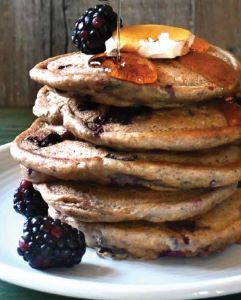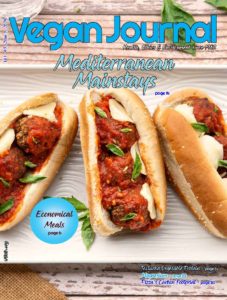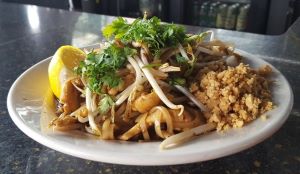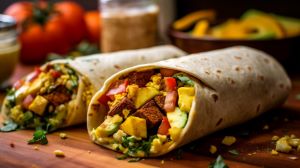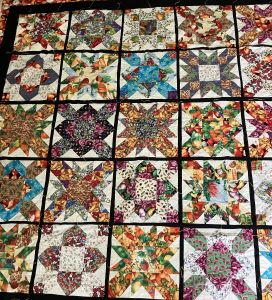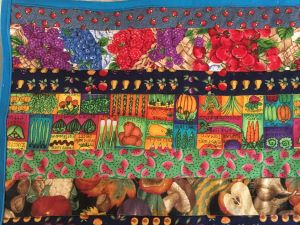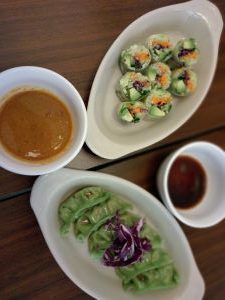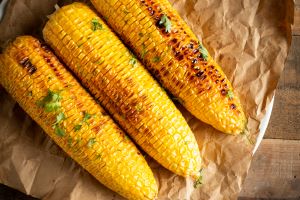Posted on
July 05, 2024 by
The VRG Blog Editor

photo from Sorbae Frozen Treats
The Vegetarian Resource Group maintains an online Guide to Vegan/Vegetarian Restaurants in the USA and Canada. Here are some recent vegan restaurant additions. The entire guide can be found here: http://www.vrg.org/restaurant/index.php
To support the updating of this online restaurant guide, please donate at: www.vrg.org/donate
Here are some new additions to VRG’s guide:
Ave 26, 242 North Ave. 25, Los Angeles, CA 90031
Taking on the role as Los Angeles’ only vegan Philly cheesesteak provider, Ave 26 offers more cheesesteak options than most West Coast natives could ever dream of. Served on Amoroso rolls, best sellers from their menu include the Meatball Sub (vegan meatballs, grilled onions, mushrooms, marinara and pesto sauces, with a dusting of almond Parmesan) and the Buffalo Chick’n Cheesesteak (vegan chicken and grilled onions with buffalo sauce, bleu cheese dressing, and house special cheese whiz). And because every sandwich needs a good side, there are a variety of fry options, including the Trinity Fries (seasoned fries with grilled onions, bell peppers, and mushrooms, served with a side of cheese whiz). And if there’s still room for dessert, there’s the Brownie Bomb, the perfect sweet counterpart to the savory sandwiches—a fudgy brownie with chunks of vegan cookie and pretzels.
Plant Baked by Sarah, 400 E. 29th St., Baltimore, MD 21218
Plant Baked by Sarah is a Boutique Vegan and services the greater Baltimore and DC Metro Area. Sarah uses fresh fruit and pure extracts to craft made to order vegan Signature and Custom Celebration Cakes including Wedding Cakes and Cupcakes, as well as Smash cakes for the wee ones! She strives to coordinate her confections with clients’ taste and dietary and décor preferences. Let’s talk Flavors. For Cakes, there’s Rich Chocolate, Vanilla Bean, Almond, Lemon, Carrot, Cinnamon Mocha, Snickerdoodle, and more. Besides the basics, Buttercream choices include Maple Cinnamon, Cookies and Cream, Peanut Butter, Raspberry, Cream “Cheese,” and more. Filling options are Lemon Curd, Raspberry, Strawberry and Chocolate Ganache. Cakes are nut free unless otherwise noted. Gluten-free is an additional charge. View her webpages and social media and prepare to be swept up in the beauty of multi-petal Blossom Cupcakes and other artistic creations and to see how this former environmental and chemical engineer has transferred her skills to take flavors from nature and alchemize flour into flowers.
Plantitude, 431 1st Ave., Ladysmith, BC V9G 1A1, Canada
At Plantitude the goal is fresh, made-from-scratch, local, organic food whenever possible; this extends to their coffee, wine, beer offerings as well. While Brunch includes some items in common with the Dinner menu, you could fortify yourself with some Comfort Fuel like Chikin and Waffles with sriracha maple syrup and candied bacon; Sausage Mushroom Melt with aioli, spinach, mushrooms, and “Beyond Meat” breakfast patties on a toasted English muffin topped with melted cheddar and crispy oyster mushrooms; Cinnamon Maple French Toast or Waffles and Bacun with maple syrup, coconut whip and fruit cup; or Plantitude Benny–toasted English muffin with aioli, sautéed spinach, and mushrooms, bacun, tofu-fried ‘egg’ with cheddar yolk, almondaise, and potato nuggets. Dinner choices begin with Small Plates like Garlic Butter & White Wine Sautéed Prawns crafted with Konjac root prawns, arugula, and ciabatta toast. There’s also Soup & Salads. There are a few Bowls including Spicy Lemongrass Chikin and Veg Bowl with sautéed peppers, onions, chickpeas, and zucchini, topped with carrot, cabbage shreds, sprouts, black sesame seeds, and brown rice. Grilled Better Brat features “Beyond Meat” brat sausages with mushroom red-wine gravy, garlic mashed potatoes, and grilled seasonal veggies. Smokie Mac & Cheese with Bacun, offers caramelized onions, baby peas, creamy three cheese sauce topped with mixed cheese shreds. Mushroom Risotto showcases mixed mushrooms, baby peas, garlic, sage, and sunflower parma. Peppercorn Sirloin Burger is a peppered “Impossible” burger with caramelized onions, cheddar, arugula, and peppercorn mayo. Many Gluten-Free options are available. You may want to leave room for Desserts like Brownies, Fudge Bars, Tiramisu, Caramel Pecan Torte, and more.
Root2Rise, 359 Manville Rd., Pleasantville, NY 10570
An upscale fast casual café, bakery, and juice bar featuring a wide range of breakfast items, baked goods, salads, plant-based burgers, pizzas, beverages, and more. All of their menu options are gluten-free, vegan, 100% plant-based, and organic. Some popular dishes include Mushroom Toast, Blueberry Cardamom Scone, Chickpea Quinoa Chaat Salad, Smashed Pea Guacamole, Spicy Thai Peanut Ramen, Beety Burger, Mac & Cheese, Mulligatawny Soup, and Black Daal Soup. Overall, the menu is seasonal, unique, and globally inspired. Additionally, there is limited seating available inside the establishment and outside.
Sorbae, 1353 Purchase St., New Bedford, MA 02740
The mission at Sorbae is to expand the variety of what’s typically available in non-dairy frozen treats and to enrich our experience by introducing our palates to culturally diverse flavors. Crafted from a cashew and coconut base, Sorbae’s vegan frozen treats are available in a myriad of imaginative flavors. Never had a Sweet Corn frozen dessert? Here’s your chance to try this Brazilian-inspired treat! There’s also Acai, blended with strawberries and bananas, Goiabada (Creamy Guava), Coco Key Lime, Brigadeiro (a chocolate truffle-like fudge), Caramel Macchiato, and many more! Enjoy these frozen desserts as Soft serve, Pops, or as the cool filling in a warm Bae Bun (a shout out to Italy’s Brioche con Gelato) complete with your chosen toppings! Talk about an “ice cream” sandwich! Choose one of their signature options like Americana with Vanilla vegan frozen dessert, apple pie filling, caramel, and cinnamon or Vacay Bae with chocolate, passionfruit, and coconut flakes to name a couple. Or Design Your Own Bae Bun with chocolate or vanilla and Toppings like Chocolate dip, Oreos, White Chocolate, Marshmallows, Cookie Butter, Caramel, Peanut butter, Almonds, Berry sauces—the list goes on!
The Cutting Board Plant Based Kitchen, Fuel & Iron Food Hall, 400 S. Union Ave., Pueblo, CO 81003
The Cutting Board features a concise menu of original appetizers and entrees incorporating portobello mushrooms, Beyond Burger patties, “good’a chz”, and other vegan favorites. Popular dishes include Cauliflower Wings, Cucumber Quinoa Wrap, and Green Chili Nachos. Located at the Fuel & Iron Food Hall in central Pueblo (down the street from the Railway Museum and Union Depot, and just across the river from the Library District Main Branch).
Veggie In, 2516 Peach Orchard Rd., Augusta, GA 30906
This restaurant is known for its great vibes and delicious, flavorful food and smoothies. The atmosphere is warm and uplifting, and the staff are especially welcoming. Positive affirmations and quotes can be found posted around the store, and the interior design is colorful and eclectic. Sample dishes include the Portobello Mushroom Sandwich and Chick-less Chicken Salad Sandwich, and they serve smoothies and smoothie bowls such as the Green Lean smoothie and Berry Smoothie Bowl.
